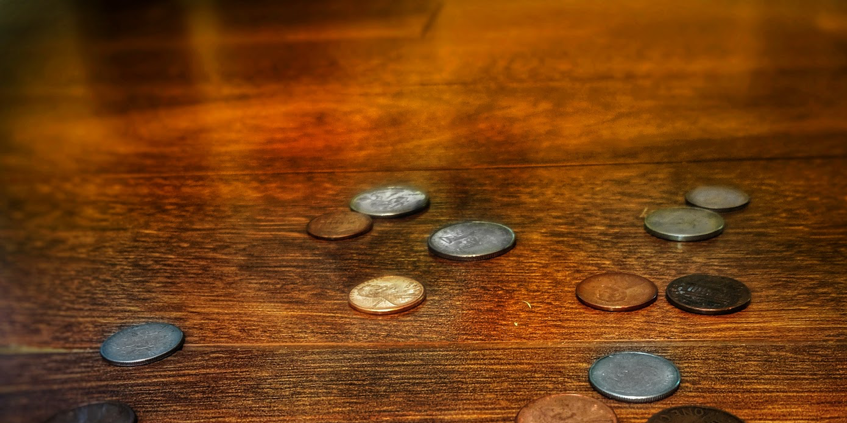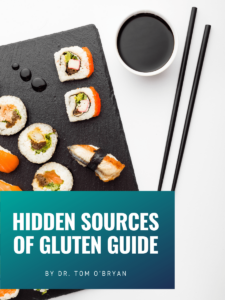Remember that old fairy tale about Hansel and Gretel? The parents were so poor they decided to send their children off into the woods to have them fend for themselves. The children started picking strawberries. But as they wandered, they were lured to the witch’s gingerbread house made of sweets. It nearly killed them. They fought back and escaped to a welcoming community that offered love and protection.
So many people feel they can’t afford healthy, organic foods. They turn to foods lacking the necessary nutrients needed to optimize their health.
Well, those diets can quite literally be the death of you. (Think of yourself as a plant. Instead of getting sunlight, someone puts up a painting with a sun on it.) It really isn’t a substitute that sustains life.
Let theDr.com website be the welcoming community that helps you out. I don’t know your situation, but I can tell you, “where there’s a will there’s a way.”
First, let’s remove that obstacle. (No, we can’t make you suddenly rich.) But we can provide you with some creative alternatives.
Here are some helpful hacks to get you eating healthier:
- Eat at home. People used to look at fast food restaurants like McDonald’s as inexpensive, but has anyone noticed a meal for one person is about $7.50 nowadays? For a family of four, that’s $30! Instead of eating out, plan ahead and have easy to cook options that allow you to quickly cook foods that are more nutrient-dense. Heck, for $30 you can splurge and make a gourmet home-cooked meal! Plus, you know exactly what is going into those meals. A study, done in my hometown of Detroit, found that 60% of respondents reported eating out at a restaurant at least once a week, with most of those trips being to nearby fast food restaurants. It concluded that there was a correlation between more frequent restaurant dining and a higher BMI. (1) Are any of us surprised by this? You pay good money to put bad stuff in your body. Build up your repertoire of recipes that include nutrient-dense foods, so they will find their way into your gut.
- Buy in bulk or buy your favorite items when they are on sale. I am always trying to find ways to offer sales on our products to allow people to save money. Sometimes it can be hard to do the right thing. Here’s a hot tip: Set aside a couple of hours one day a month to create multiple “freezer meals.” It also saves you time and money. Spend the same amount of time in one week as one month in prep. A little bit of planning can go a long way. You won’t nickel and dime yourself at the checkout or need to go out to eat because you don’t have the energy or food on hand.
- Buy in-season. You’ll get more diversity for your microbiome and reap more health benefits from the foods when they are fresh and at their peak. During this time of plenty, they are also discounted. It’s a win-win. Often foods that are grown out of season are not produced locally. In order to extend their shelf life and allow the food to make it to market, they contain a lot of preservatives and pesticides. From the time it is picked, it begins losing nutrients, so buying locally in-season produce is your best option.
- Garden. If you have children, it’s a great learning experience. If you are older, it is an excellent activity to keep you active and engaged. Over the course of 16 years, one study tracked more than 2,800 men and women to assess lifestyle factors and their risk of dementia. It found a 36% lower risk among people who garden daily. (2) Whatever your age, let’s not forget that you can also do this with friends. You can grow tomatoes and green beans. A friend grows peppers and zucchini. Another friend grows carrots and cucumbers. And you swap. It’s the healthy version of a Christmas cookie exchange. (And an organic pack of seeds only costs 25 to 50 CENTS!) Even people without much land are able to garden. Consider vertical gardening or container gardening. (Like I said, “Where there’s a will there’s a way.”)
- Work a community garden. Each one has its own way of doing things. It may allow you to do a “work for food” program. Check what your area has to offer. The Journal of Nutrition Education and Behavior cited a research study done on Fruit and Vegetable Intake among Urban Community Gardeners in Flint, Michigan. It found that “adults with a household member who participated in a community garden consumed fruits and vegetables 1.4 more times per day than those who did not participate, and they were 3.5 times more likely to consume fruits and vegetables at least 5 times daily.” (3)
- Host and attend round-robin dinners. You provide the space and drinks, and each guest brings a portion of the meal. Give your theme a healthy twist. Then, be a guest at someone else’s where you can share one aspect of a meal. It’s a great way to socialize and eat the foods you normally wouldn’t make.
- Eat leftovers. Before you create your next meal, check your fridge to see what that meal should include before perishable foods go bad. According to a survey by the American Chemistry Council, the average household throws out $640 of food every year! (4) That’s a huge amount that could be redirected toward purchasing healthier options.
- Regrow foods. Did you know when you cut your celery you can save the bottom, place it in water, and it will regrow? There are several foods you can do this with, including Romaine lettuce, cabbage, bok choy… And instead of throwing out sprouted onions or garlic, take the sprouts and grow new ones! Waste not, want not.
- Forage while you hike. While some people may want to get out and do this every day, even just locating trails nearby that have things like raspberries or blueberries can be such a fun day while at the same time actually providing you with goodies that are nutritious. Take a lesson from Hansel and Gretel. Stick to the good stuff. And whatever you do, do not eat anything you are unsure of. There are many poisonous mushrooms. If you don’t know, better safe than sorry. Before you go, speak to a ranger or look up prime berry picking hiking trails.
- Maximize your efforts. Some foods are “dirtier” than others. If you still can’t afford all of your foods being non-GMO, organic foods, put your money where it matters most. Avoid the Dirty Dozen unless they are organic. These foods have high levels of pesticides: Strawberries, Spinach, Nectarines, Apples, Peaches, Pears, Cherries, Grapes, Celery, Tomatoes, Sweet Bell Peppers, and Potatoes. Opt instead for the “Clean 15.” See my blog on Top 10 Foods to Avoid for more recommendations.
- Reexamine your foods. Chips vs produce. A lot of times people think they can’t afford fresh produce when they really can. Don’t add more food to your grocery list. Just substitute the produce in place of your chips. Think that is cost-prohibitive for you? Think again. A bag of grapes is less than or equal to the cost of a bag of chips. And while the grapes are loaded with sugar, they are also high in antioxidants. Do your chips do that? Plus, don’t skip the organic aisle assuming that organic is always more expensive. While generally, the “equivalent” (for lack of a better word) is slightly cheaper, that isn’t always the case.
- Improve where you can. It hurts me to say this, but even having pesticide-riddled fruits and vegetables are better than none. (You have no clue how much that pained me.) Keep an eye out for my upcoming blog about pesticides and your health. You’ll see why. (It’s pretty grim. Pun intended.) Plus, consider the freezer aisle in addition to the produce aisle. You may have more alternatives that are pesticide-free that meet your price point.
- Join a CSA. Community Supported Agriculture programs vary from area to area, but by supporting the farmers in your area, you also benefit. You can buy locally grown, in-season foods often at a discount. When you sign up for a CSA program, it allows the farmer to purchase the supplies needed for crops that year. And it gives them a general idea of how much to plant. It is a membership program that benefits both you and the farmers.
- Save elsewhere. I know…easier said than done. But your health is important. You have one body from cradle to grave. Let’s push back the grave part of that statement AND make the in-between part more lively, pain-free and enjoyable. Food is life. Food is medicine. Food is sustenance. Junk food is death. Junk food is toxic. Junk food is not sustaining. It’s pretty black and white. The wonderful thing is that every time you eat you have an opportunity to choose. So if you were doing really well and hit a snag, what then? Don’t beat yourself up over it. Don’t force it to be all or nothing at the expense of giving up. This is a marathon, not a sprint. You’ll have other chances to do the right thing.
We’re a couple of hundred years too late to help Hansel and Gretel, but please know that we are always here to support you through a variety of ways: weekly Facebook Live Events, blogs, summits, and specially formulated supplements. It’s up to you to choose which ways work best for you. We’re just making it easy to do the right thing.





